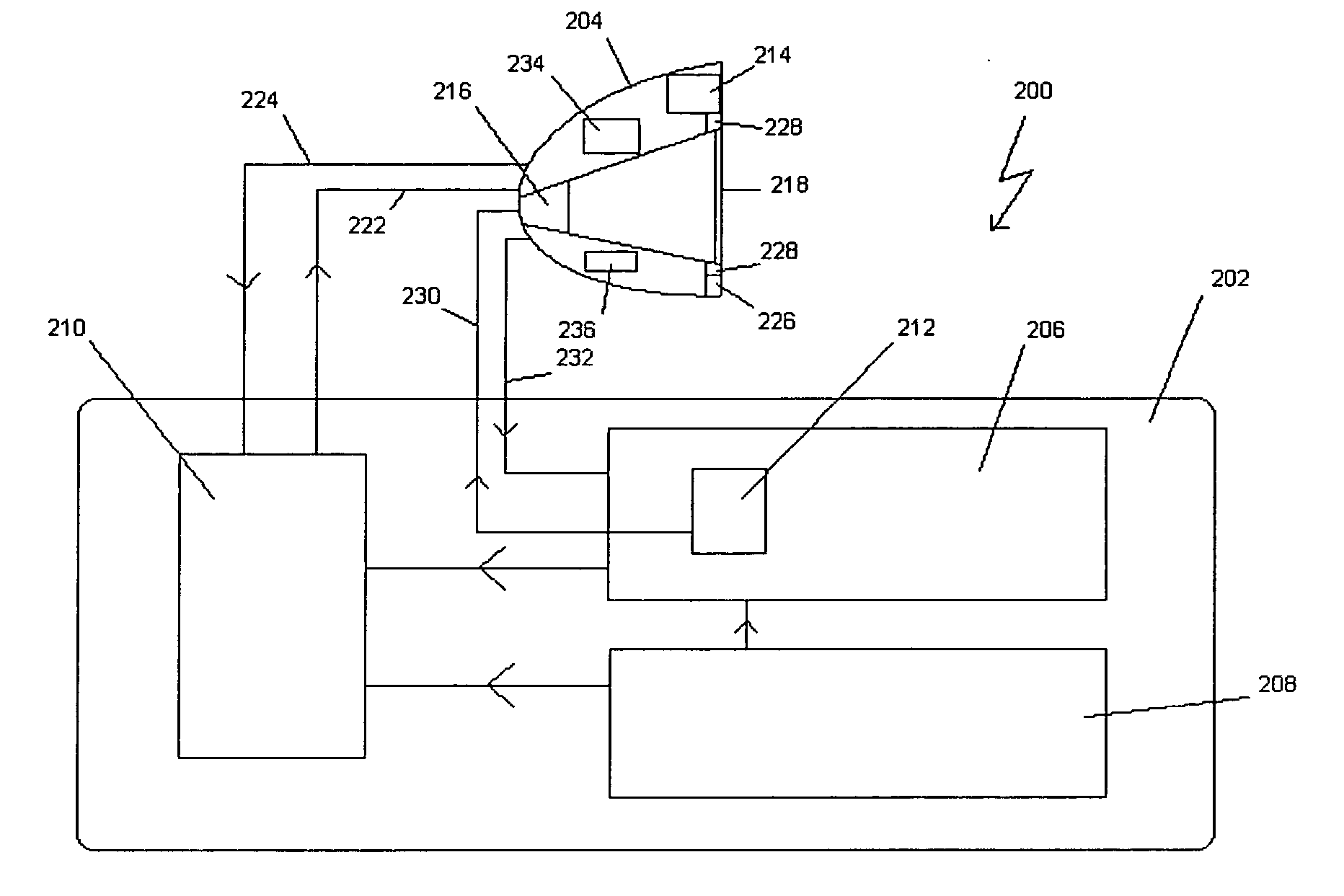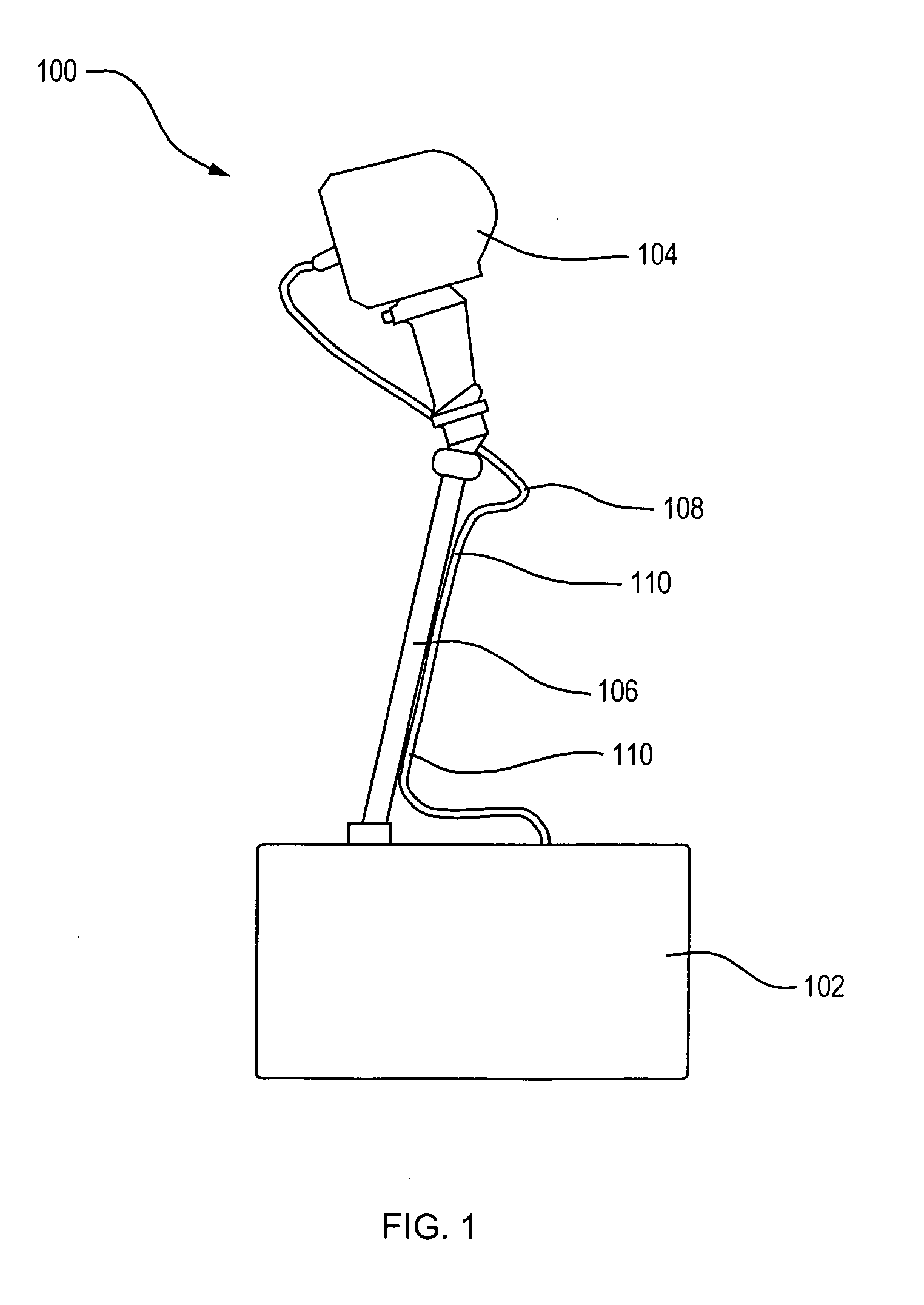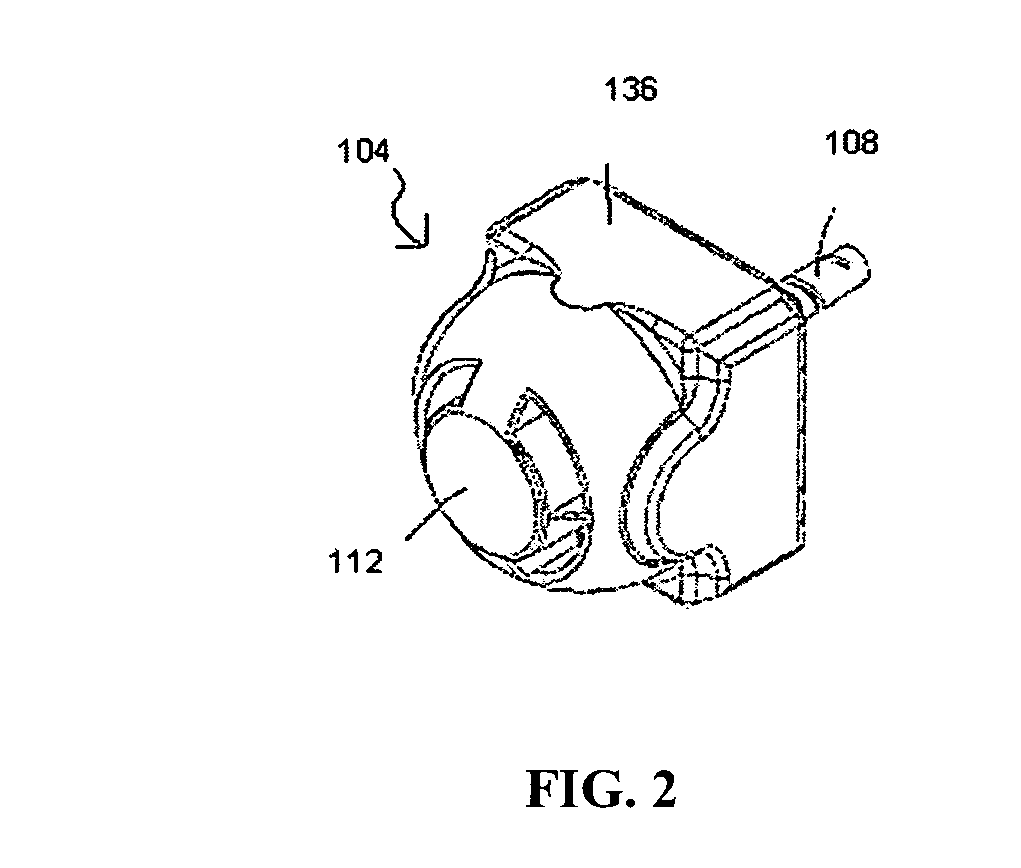Treatment of tissue volume with radiant energy
a tissue volume and radiant energy technology, applied in the field of tissue volume treatment with radiant energy, can solve the problems of limited teaching, limited penetration of heat into tissue at relatively shallow depths, clinical trials so far inconclusive, etc., to reduce the sensitivity of nociceptic receptors, increase the sensitivity of receptors, and maximize efficacy
- Summary
- Abstract
- Description
- Claims
- Application Information
AI Technical Summary
Benefits of technology
Problems solved by technology
Method used
Image
Examples
Embodiment Construction
[0062]The devices and methods disclosed in conjunction with the embodiments discussed below provide various mechanisms to effectively irradiate and treat volumes of tissue, such as joints that lie well below the surface of the tissue. The devices and methods described below are able to effectively treat tissue located at a depth below the surface of the tissue by, among other things: delivering EMR to an active treatment area that lies deeper in the tissue than prior art methods are capable of treating; delivering an effective dose of EMR to a specific volume of tissue located below the surface of the tissue; shifting the depth at which the tissue is effectively treated over a volume of tissue needing such treatment; providing a method of pain reduction and relief, as well as a method to promote the healing of damaged tissue, by irradiating tissue with EMR in combination with controlling temperature in the target tissue region; providing a treatment regimen that adjusts the irradian...
PUM
 Login to View More
Login to View More Abstract
Description
Claims
Application Information
 Login to View More
Login to View More - R&D
- Intellectual Property
- Life Sciences
- Materials
- Tech Scout
- Unparalleled Data Quality
- Higher Quality Content
- 60% Fewer Hallucinations
Browse by: Latest US Patents, China's latest patents, Technical Efficacy Thesaurus, Application Domain, Technology Topic, Popular Technical Reports.
© 2025 PatSnap. All rights reserved.Legal|Privacy policy|Modern Slavery Act Transparency Statement|Sitemap|About US| Contact US: help@patsnap.com



